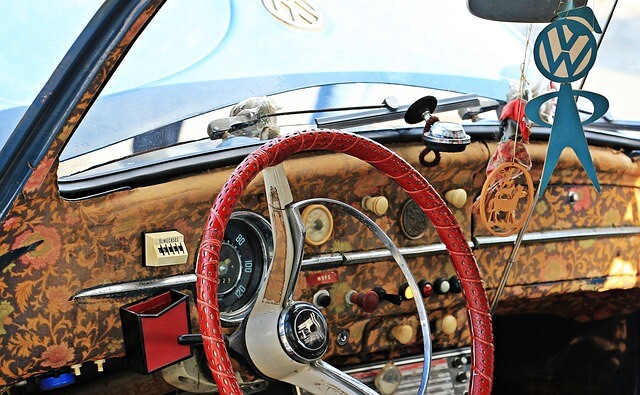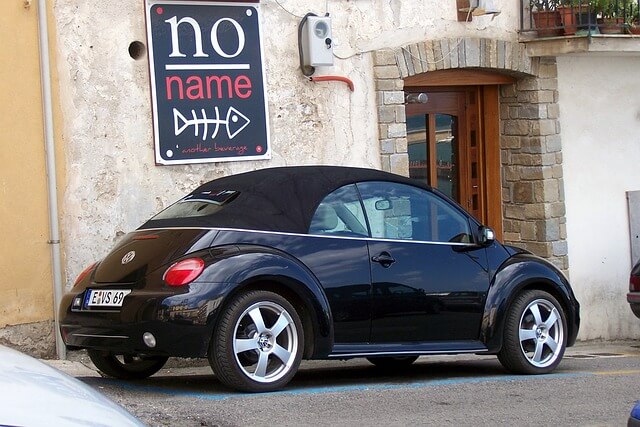The Volkswagen Beetle is an iconic car that has left an indelible mark on popular culture worldwide. Since its inception, the Beetle has not only been a means of transportation, but it has also become a cultural phenomenon. From the hippie movement of the 1960s to modern-day fandom, the VW Beetle has been a symbol of freedom, individuality, and nostalgia. This article explores the cultural impact of the VW Beetle and how it has evolved over time.

Introduction
The Volkswagen Beetle, also known as the Bug, was first introduced in Germany in 1938. It was designed to be an affordable car for the masses, but it quickly became much more than that. The Beetle has since become an iconic symbol of popular culture, with a long and storied history.
The History of the VW Beetle
The Volkswagen Beetle, also known as the “Bug,” is one of the most iconic cars of all time. Its history spans over eight decades, from its inception in Nazi Germany to its current status as a beloved cultural icon. Here’s a closer look at the fascinating history of the VW Beetle.
The Volkswagen Beetle was first developed in the 1930s, as part of Adolf Hitler’s plan to create an affordable and reliable car for the German people. The first prototype was developed by Ferdinand Porsche in 1936, and the car went into production in 1938. However, the outbreak of World War II halted production, and the Beetle was instead used for military purposes.
After the war, production of the Beetle resumed, and the car became a symbol of Germany’s post-war economic recovery. It quickly became popular in other countries as well, thanks to its unique design and reliable performance.
Throughout the 1950s and 60s, the Beetle became associated with the counterculture movement, particularly in the United States. Its affordability and distinctive appearance made it a favorite among young people, who often decorated their Beetles with peace signs and other symbols of the era.
In the 1970s, the Beetle faced increased competition from Japanese automakers, and sales began to decline. However, the car remained popular in many parts of the world, particularly in Mexico, where production continued until 2003.
In the 1990s, Volkswagen introduced a new version of the Beetle, which featured a more modern design but still retained the car’s classic shape. The new Beetle was a hit with consumers, and it helped to revitalize interest in the brand.
Today, the Volkswagen Beetle is no longer in production, but it remains a beloved cultural icon. It has appeared in countless movies and TV shows, and it continues to be a favorite among collectors and enthusiasts around the world.
Overall, the history of the VW Beetle is a testament to the enduring popularity of this unique and iconic car. Its legacy continues to inspire new generations of drivers, and its cultural impact will be felt for many years to come.
The Beetle and the Hippie Movement
The Volkswagen Beetle has always been more than just a car. In the 1960s and 70s, it became a symbol of the counterculture movement, particularly among the hippie subculture. Here’s a closer look at the relationship between the VW Beetle and the hippie movement.
One of the key features that made the Beetle popular among hippies was its affordability. The car was relatively cheap compared to other vehicles on the market, making it accessible to young people who were often living on a tight budget. The car’s unique design also made it stand out from the crowd, with its round shape and distinctive headlights.

The Beetle was also a reliable car, which was important for young people who often traveled long distances to attend music festivals and other events. Many hippies customized their Beetles with psychedelic paint jobs and other decorations, turning them into works of art that reflected the spirit of the era.
The popularity of the VW Beetle among hippies had a significant impact on the automotive industry. It helped to establish the idea of cars as a means of self-expression, rather than simply a mode of transportation. This idea has influenced car design in the decades since, with manufacturers now placing more emphasis on the aesthetic appeal of their vehicles.
The cultural impact of the VW Beetle on the hippie movement cannot be overstated. The car was a symbol of freedom, individuality, and non-conformity, values that were at the heart of the counterculture movement. Its popularity helped to spread these values to a wider audience, making the Beetle an important part of the cultural landscape of the time.
Today, the VW Beetle remains a beloved cultural icon, particularly among those who remember its significance in the hippie movement. Its enduring popularity is a testament to its unique design and the important role that it played in the cultural history of the 20th century.
In conclusion, the Volkswagen Beetle and the hippie movement were a match made in heaven. The car’s affordability, reliability, and distinctive design made it the perfect vehicle for young people who were looking to express themselves in new and creative ways. Its impact on the automotive industry and the cultural phenomena that it inspired make it an important part of our shared history.
The Beetle in Pop Culture
The Volkswagen Beetle is more than just a car. It’s a cultural icon that has played a significant role in shaping pop culture over the years. From movies and music to advertising and marketing, the Beetle has been omnipresent in the entertainment industry for decades. In this section, we’ll explore the various ways in which the Beetle has influenced pop culture and discuss some of the unique design features that have made it so popular.
Movies and TV Shows
The Beetle has appeared in numerous movies and TV shows over the years, cementing its place in pop culture history. One of the most iconic appearances was in the 1968 movie “The Love Bug,” which featured a white Beetle named Herbie with a mind of its own. The movie was a massive success and led to several sequels and spinoffs. The Beetle has also appeared in other movies, including “Little Miss Sunshine,” “Her,” and “Austin Powers: The Spy Who Shagged Me,” among others.
Music
The Beetle has been a popular subject in music for years. The most famous example is probably the 1965 song “Beetle Song” by the American rock band The Who. The song tells the story of a young man who buys a Beetle and falls in love with it. Other musicians who have referenced the Beetle in their songs include Pink Floyd, The Beatles, and The Beach Boys.
Advertising and Marketing
The Beetle has been the star of many advertising campaigns over the years. One of the most famous was the “Think Small” campaign, which was created by the advertising agency Doyle Dane Bernbach in the 1960s. The campaign was a huge success and helped to establish the Beetle as a counter-cultural symbol.
Design Features
The Beetle’s unique design features have made it instantly recognizable and have contributed to its popularity over the years. The car’s round shape and curved lines make it stand out from other cars on the road, and its compact size makes it easy to park and maneuver. The Beetle’s rear-mounted engine also gives it a distinctive sound and handling, making it a joy to drive.
The Beetle’s Relevance in Modern Times
The Volkswagen Beetle is an iconic car in production since 1938. Despite its age, the Beetle remains relevant in modern times and continues to be a beloved car among drivers worldwide. In this post, we will explore the reasons why the Beetle remains an important and influential creature within modern society.
The Beetle’s design is a testament to its relevance in modern times. It is a car that has stood the test of time and has become a classic, recognizable design. Its unique shape and design features have been incorporated into various products, including clothing, furniture, and accessories. The Beetle’s impact on product design is a testament to its influence on contemporary culture.
The Beetle also remains relevant in science and art. In science, the beetle has been a source of inspiration for biomimicry, which is the study of how nature can be used to solve problems in engineering and design. The Beetle’s streamlined design has been used to inspire aerodynamic cars and airplanes. In art, the Beetle has been used as a symbol of rebellion and counterculture movements.
The Beetle’s relevance in modern times can also be seen in its popularity among collectors and enthusiasts. The car has a devoted following, and there are numerous clubs and organizations dedicated to the Beetle. The Beetle’s longevity and popularity are a testament to its importance in automotive history.
In conclusion, the Volkswagen Beetle remains a relevant and influential creature in modern times. Its unique design, impact on product design, science, and art, and popularity among collectors and enthusiasts make it an important part of contemporary culture. As the Beetle continues to inspire new generations, its legacy will remain alive and well.

The Beetle’s Legacy and Future
The Volkswagen Beetle has a rich history, having made its debut in Germany in the 1930s. It quickly became an iconic symbol of Germany’s automotive industry and was eventually exported worldwide. The Beetle’s popularity soared in the 1960s and 70s, where it became an essential part of the counterculture movement, associated with hippies and peace activists.
In recent years, the production of the Beetle has come to an end, with the last model rolling off the assembly line in 2019. While this may have marked the end of an era, the Beetle’s legacy remains firmly intact. The car’s unique design, affordability, and cultural significance have made it an icon that has stood the test of time.
The Beetle’s popularity can be attributed to its unconventional design, which set it apart from other cars at the time. The rounded shape and friendly appearance gave it a distinct personality that people could easily relate to. It was this personality that made it a star in pop culture, with appearances in movies like Herbie and The Love Bug, and in songs like “Little Deuce Coupe” by the Beach Boys.
While the production of the Beetle may have come to an end, Volkswagen has plans to continue the car’s legacy. The company is currently investing in electric vehicles, with plans to release an electric version of the Beetle. This move is not only environmentally friendly but also ensures that the car’s legacy lives on.
In conclusion, the Beetle’s legacy is firmly established, with its unique design and cultural significance continuing to influence popular culture. Although the production of the car has ended, Volkswagen’s plans for the future ensure that the car’s legacy lives on, and the Beetle remains an important part of automotive history.
Conclusion
The Volkswagen Beetle has had a profound cultural impact that spans generations. From its humble beginnings as a “people’s car” to its status as a pop culture icon, the Beetle has remained relevant and beloved for over 80 years.
Its quirky design, playful personality, and rich history have made it a symbol of freedom, individuality, and nostalgia. Whether you’re a fan of the original Beetle or one of its modern-day iterations, there’s no denying the impact that this iconic car has had on popular culture.

Recent Comments